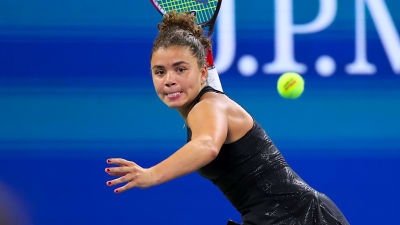When Cristian Chivu took the reins of Inter Milan for the 2025 FIFA Club World Cup, expectations were tempered.
The shadow of Simone Inzaghi’s reign still lingered, and many wondered if Chivu could navigate the tactical challenges of international club football. What unfolded instead was a compelling mix of structure, adaptability, and bold innovation that gave Inter fans—and analysts—plenty to dissect.
For fans eager to see how Inter Milan’s Club World Cup blueprint might carry over into domestic competition, next-gen football prediction models offer insights into how Chivu’s philosophy could shape the Serie A season ahead.
The Tactical Foundation: 3-5-2, Reimagined
Chivu didn’t rip up the tactical script when he arrived. Instead, he refined what he inherited. The starting shape was a familiar 3-5-2—an echo of Inzaghi’s system—but Chivu added a layer of aggression and control.
His version compressed the central channels more effectively, implemented quicker pressing triggers, and shaped the team into a more cohesive, modern pressing unit.
Yet this was no static formation. Throughout the Club World Cup, Inter Milan morphed into a 3-1-4-2 in possession to suffocate the midfield zone, or pivoted to a more defensively conservative 5-3-2 when protecting a lead. These subtle shifts were made possible through dynamic role distribution and intelligent player positioning.
Pressing With Precision: Chivu’s High-Octane Blueprint
What truly set Chivu’s Inter apart was the pressing strategy. Unlike Inzaghi’s more reactive system, Chivu opted for a front-foot approach. From the first whistle against Monterrey, Inter hunted in packs—especially during second halves—forcing errors and regaining control high up the pitch.
Key to this strategy was the counter-press. The moment Inter lost possession, particularly in midfield, players would collapse back onto the ball with intensity. This counter-press wasn’t just physical; it was timed with staggering discipline, limiting opponents’ options and transition threat.
From Man To Zone: A Defensive Set-Piece Revolution
One of Chivu’s boldest moves was his total overhaul of Inter’s set-piece defending. He abandoned man-marking schemes in favour of zonal setups, allowing players to defend space instead of chasing assignments.
This move added clarity and order, reducing the chaotic marking lapses that had occasionally plagued the squad. Corners and wide free-kicks now saw Inter form staggered lines across danger zones, anticipating runs and contesting aerial balls with positional awareness.
Adaptive Shape-Shifting: Flexibility without Chaos
Another Chivu hallmark was the ability to shift shapes seamlessly mid-match.
For instance, in the Monterrey match, Chivu pushed Inter into a 3-4-2-1, sacrificing a midfield pivot to place two creators behind a central striker. This injected new ideas into the final third and allowed Inter to control possession deeper into the opponent’s half.
Such changes didn’t require wholesale substitutions. Instead, players slid into new roles—wing-backs pushed forward, midfielders covered space, and the defensive three stretched laterally to support.
Trust In Youth: Energy With A Vision
Perhaps the most endearing aspect of Chivu’s approach was his commitment to youth. Instead of relying solely on seasoned veterans, he rotated his squad during the tournament—highlighting the likes of Luka Sučić, Sebastiano Esposito, and Nicola Zalewski.
This youth injection wasn’t just sentimental. These players brought urgency, unpredictability, and technical flexibility. Sučić, in particular, emerged as a pivot capable of both holding possession and launching incisive passes. It was a bet on long-term squad evolution—and one that showed promise.
Build-Up & Transition: Calm before The Vertical Storm
In the defensive third, Inter’s build-up remained patient and composed. Chivu encouraged play from the back through a spread-out back three. This drew opposition pressure out of shape and opened midfield lanes for progression.
But Chivu didn’t seek sterile possession. Once the midfield zone was breached—often with one-touch triangles or switches to wing-backs—the transition into attack became vertical and sharp.
Wing-backs, such as Dumfries and Carlos Augusto, were central to this shift. They had dual roles: recycling possession when wide or crashing forward into space when Inter entered their attacking phase.
Setbacks & Lessons: Fluminense As A Case Study
Despite these innovations, Chivu’s side wasn’t invincible. In the Round of 16 clash against Fluminense, Inter faced perhaps their toughest test.
The Brazilian side’s energetic transitions and aggressive pressing exposed some of Inter’s weaknesses—especially their overreliance on the 3-5-2 shape and fatigue among midfielders.
Inter retreated into a mid-block too early and failed to recover possession quickly, allowing Fluminense’s attackers to exploit the half-spaces. It was a lesson in balance: pressing intensity must be supported by squad depth and rotation.
A “Silent Revolution” At Inter
Italian media dubbed Chivu’s tactical blueprint a “silent revolution.” No flashy overhaul, no dramatic touchline antics—just subtle, systemic change.
He revitalised pressing principles, modernised set-piece routines, and adapted systems mid-game with clarity. But perhaps his most revolutionary act was psychological: offering the squad a tactical and emotional reset after a season that had ended in stagnation.
By empowering youth, trusting the collective press, and emphasising spatial discipline, Chivu gave Inter both short-term results and long-term identity.
Looking Ahead: What Inter Can Learn
- Fitness Demands: Chivu’s pressing system is physically taxing. To apply it consistently in Serie A, squad depth and rotation will be key. Integrating recovery cycles and load management will be vital.
- A Hybrid System: The 3-4-2-1 variant unlocked attacking creativity. It may serve as a more permanent “Plan B,” especially against compact, low-block teams in Italy.
- Offensive Set-Pieces: While defensive set-pieces improved, Inter’s attacking corners still lacked bite. This is an area ripe for innovation.
- Youth Development: If players like Esposito and Sučić are nurtured, they could become long-term tactical pillars under Chivu’s vision.
Final Thoughts
Cristian Chivu’s Inter Milan at the 2025 FIFA Club World Cup didn’t just survive the tournament—it made a statement. There were no silver medals or fireworks, but the team’s transformation was unmistakable. With a clearer identity, a stronger tactical foundation, and a reinvigorated squad, Inter fans have reasons for optimism.
If you’re curious to explore the analytics shaping modern football decisions, click here to dive into AI-powered insights, player metrics, and more.
More must-reads:
- Chelsea finally ends long-running transfer saga
- Deadline looms as Liverpool prepare record-breaking move for Alexander Isak
- The 'NFL QB season rushing leaders' quiz
Customize Your Newsletter
 +
+
Get the latest news and rumors, customized to your favorite sports and teams. Emailed daily. Always free!








